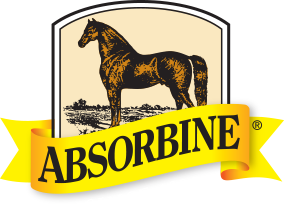 Hoof Nutrition Intelligence is a twice-a-month web segment that is designed to add to the education of footcare professionals when it comes to effectively feeding the hoof. The goal of this web-exclusive feature is to zero in on specific areas of hoof nutrition and avoid broad-based articles that simply look at the overall equine feeding situation.
Hoof Nutrition Intelligence is a twice-a-month web segment that is designed to add to the education of footcare professionals when it comes to effectively feeding the hoof. The goal of this web-exclusive feature is to zero in on specific areas of hoof nutrition and avoid broad-based articles that simply look at the overall equine feeding situation.
Below you will find Part 1 of the latest question and answer installment that you can share with your footcare clients.
Q: What’s different about feeding for winter laminitis concerns?
By Eleanor Kellon, VMD
Every winter some horse owners and caretakers are faced with the onset of obvious foot pain in their horses for no apparent reason. Once a horse has experienced this, it is likely to recur year after year. What's going on?
The normal reaction of the horse’s body during cold exposure may be decreased blood supply to the hoof, sufficient enough to cause pain. In a normal horse, vessels constrict in response to cold temperatures, but will periodically open up again to increase the blood supply if oxygen tension gets too low.
If the vascular network is damaged from prior bouts of laminitis, or if constriction is higher than normal because of hormonal issues, this protection might not occur. High insulin and cortisol make the vessels more sensitive to constrictors. High insulin is also associated with higher levels of the very potent vasoconstrictor endothelin-1.
For insulin resistant horses or those with Cushing’s disease, high insulin and cortisol levels make the vessels more sensitive to constrictors and therefore more difficult to dilate. High insulin is also associated with higher levels of the very potent vasoconstrictor endothelin-1, so the vessels in these horses are not only more difficult to dilate, but are also more constricted as a starting point.
Protection against the cold is the first step in combating winter-related hoof pain. Horses should be protected from high winds, rain and snow. They should be blanketed, wear leg wraps to warm the lower legs and lined boots. Effective lower leg wraps include standard polos and cottons, leg warmers or even fleece-lined shipping boots.
For some horses this is not enough. If your horse ends up with laminitis, even after blanketing and wrapping, supplements to enhance blood flow may help. Herbal products known as “adaptogens” promote healthy stress responses and may be beneficial.
One of the most devastating effects of winter laminitis is that it can appear to strike out of nowhere. However, if horse owners are alert to the warning signs, they can intervene early to support blood flow and protect their horse before disaster strikes.
Dr. Eleanor Kellon, a staff veterinary specialist for Uckele Health & Nutrition, has been an established authority in the field of equine nutrition for over 30 years. The owner of Equine Nutritional Solutions in Robesonia, Pa., she is a founding member and leader of the Equine Cushing’s and Insulin Resistance (ECIR) group, whose mission is to improve the welfare of horses with metabolic disorders via integration of research and real-life clinical experience. Prevention of laminitis is the ultimate goal.
Hoof Nutrition Intelligence is brought to you by W.F. Young Co. (Absorbine). 
Like many significant achievements, Absorbine® grew out of humble beginnings—and through the tenacity of someone willing to question the status quo. In this case, it was a young woman in late 19th-century Massachusetts: Mary Ida Young. Her husband, Wilbur Fenelon Young, was an enterprising piano deliveryman who relied on the couple’s team of horses to make deliveries throughout the Northeast. Inspired by Mary Ida and Wilbur’s vision, Absorbine® has continued to add innovative products throughout the years — products used every day by horse owners around the world. Which is why, since 1892, we’ve been The Horse World’s Most Trusted Name®.
Click here to read Part 2 of the Feb. 15, 2019 installment: How are decisions made between feeding concentrates vs. feeding mainly straight grains?
Click here to read more installments of Hoof Nutrition Intelligence.

Post a comment
Report Abusive Comment